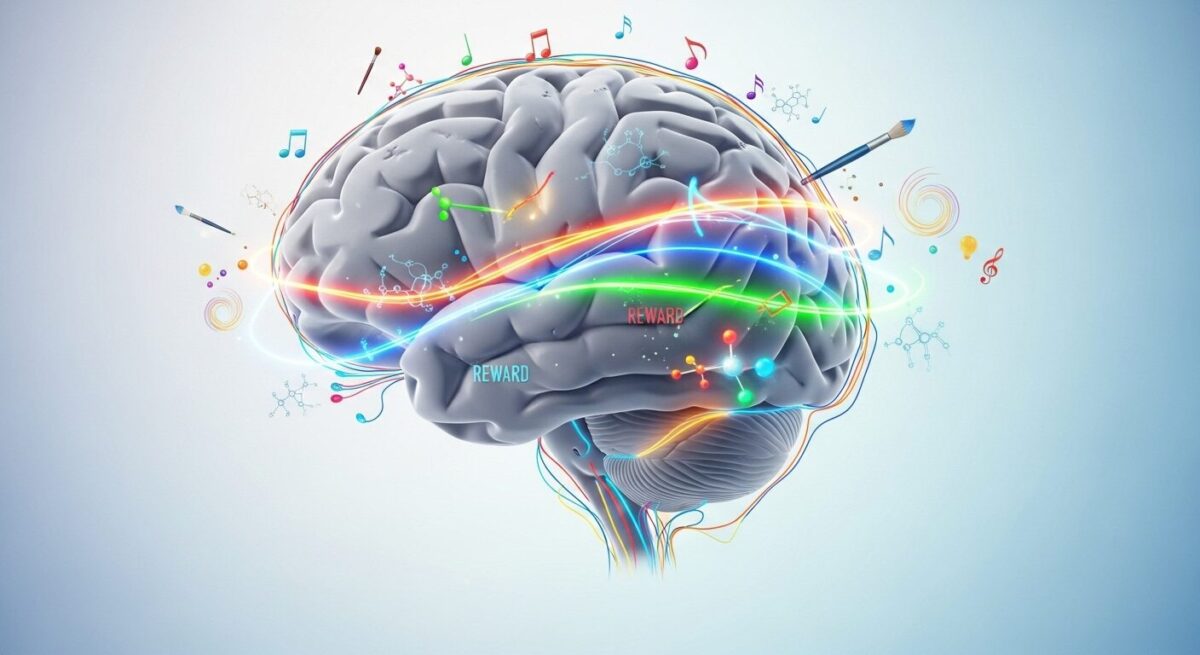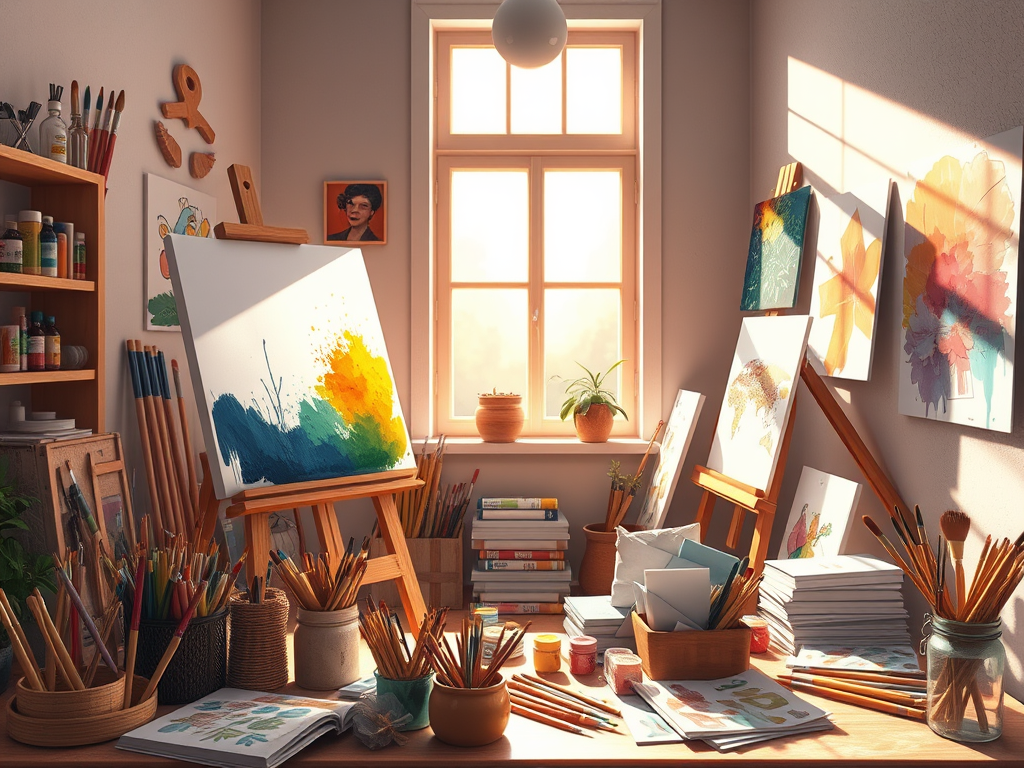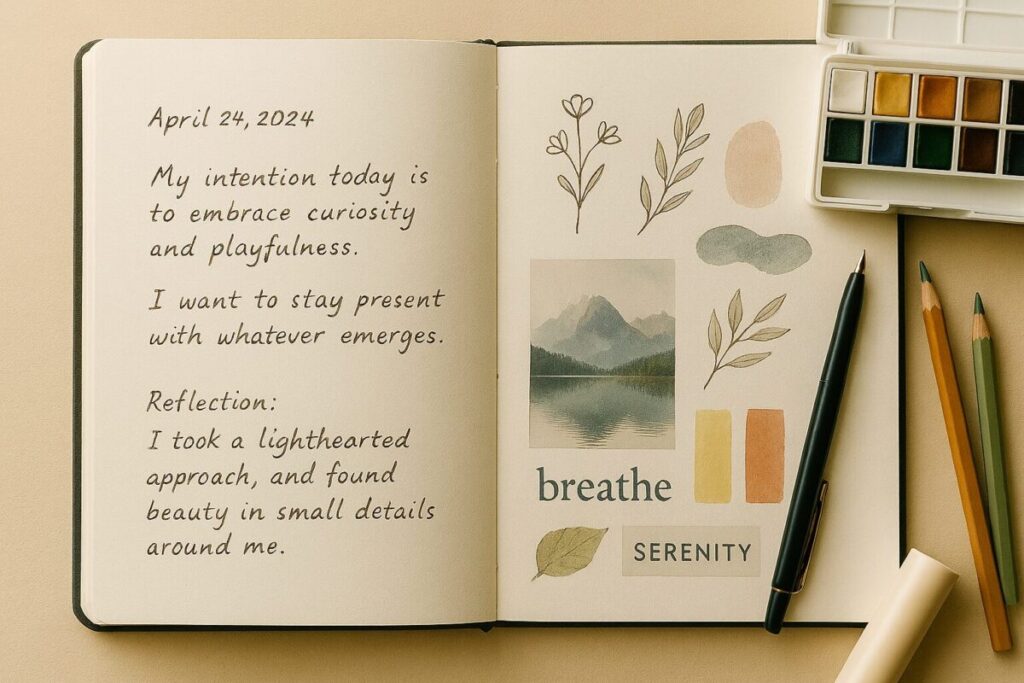Art isn’t just about creating beautiful paintings or drawings—it’s a powerful tool that can dramatically improve your mental health and overall happiness. Whether you’re feeling stressed, anxious, or simply looking for a way to boost your mood, art for mental health offers a natural, accessible path to emotional healing and personal growth.
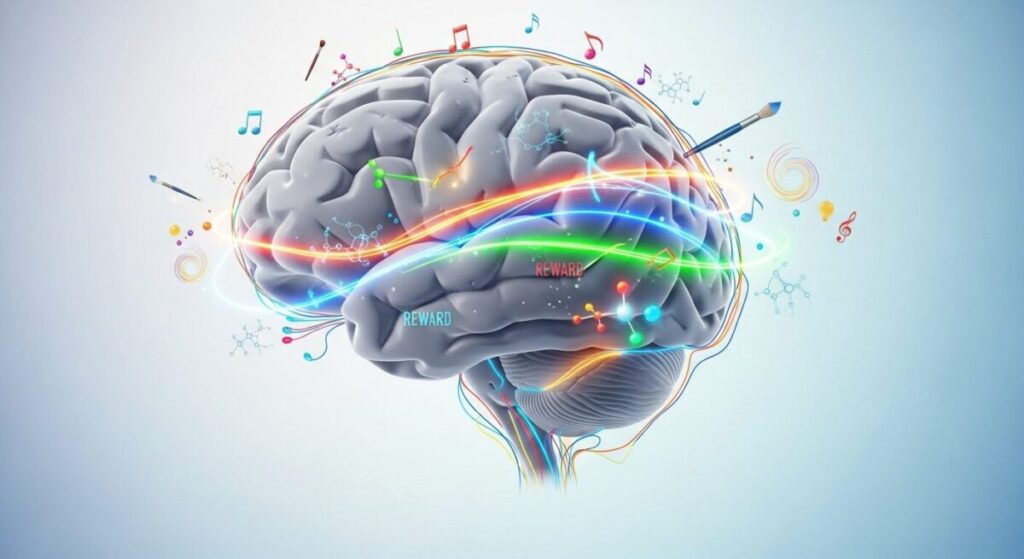
Key Points Summary:
- Art-making reduces stress hormones and activates the brain’s reward system
- Regular creative practice builds emotional resilience and coping skills
- Different art forms offer unique therapeutic benefits for various mental health needs
- Creating art provides a safe space to process difficult emotions without words
- Long-term art practice leads to lasting improvements in well-being and life satisfaction
Scientific research now proves what artists have known for centuries: creating art changes your brain in remarkable ways. From lowering cortisol levels to strengthening neural pathways responsible for emotional regulation, the benefits of artistic expression go far beyond the canvas.
The Science Behind Art and Mental Wellness
How Art Changes Your Brain
When you pick up a paintbrush, pencil, or any creative tool, your brain immediately begins releasing feel-good chemicals called endorphins. These natural mood boosters work similarly to pain medication, helping you feel calmer and more positive. Studies show that just 30 minutes of art-making can significantly reduce cortisol levels—your body’s main stress hormone.
The act of creating also activates your brain’s reward system, the same network that lights up when you experience pleasure from food, music, or social connection. This neurological response explains why art-making feels so naturally satisfying and why many people describe it as “therapeutic” even without formal training.
“Art enables us to find ourselves and lose ourselves at the same time.”
Thomas Merton
The Flow State: Where Magic Happens
One of the most powerful mental health benefits of art comes from achieving what psychologists call “flow state.” This is that magical feeling when time seems to disappear, and you’re completely absorbed in your creative process. During flow, your brain produces alpha waves associated with deep relaxation and meditation.
Research indicates that people who regularly experience flow through creative activities report:
- Lower levels of anxiety and depression
- Improved focus and concentration
- Enhanced problem-solving abilities
- Greater sense of personal accomplishment
- Increased overall life satisfaction
Art as Emotional Expression and Processing
Finding Your Voice Without Words
Sometimes our feelings are too complex or overwhelming to express through language alone. Art therapy activities provide a unique way to externalize and explore emotions that might otherwise remain bottled up inside.
Unlike verbal communication, artistic expression bypasses the analytical mind and taps directly into your emotional center. This makes it particularly valuable for:
- Processing trauma and difficult life experiences
- Exploring identity and self-concept
- Managing grief and loss
- Coping with major life transitions
- Building emotional intelligence
Different Art Forms for Different Needs
| Art Medium | Best For | Mental Health Benefits |
|---|---|---|
| Watercolor | Anxiety, perfectionism | Teaches acceptance of “happy accidents” |
| Clay/Sculpture | Anger, frustration | Provides physical outlet for strong emotions |
| Collage | Depression, low energy | Low-pressure way to create without artistic skill |
| Drawing | Racing thoughts | Focuses mind and promotes mindfulness |
| Digital Art | Social anxiety | Offers privacy and unlimited experimentation |
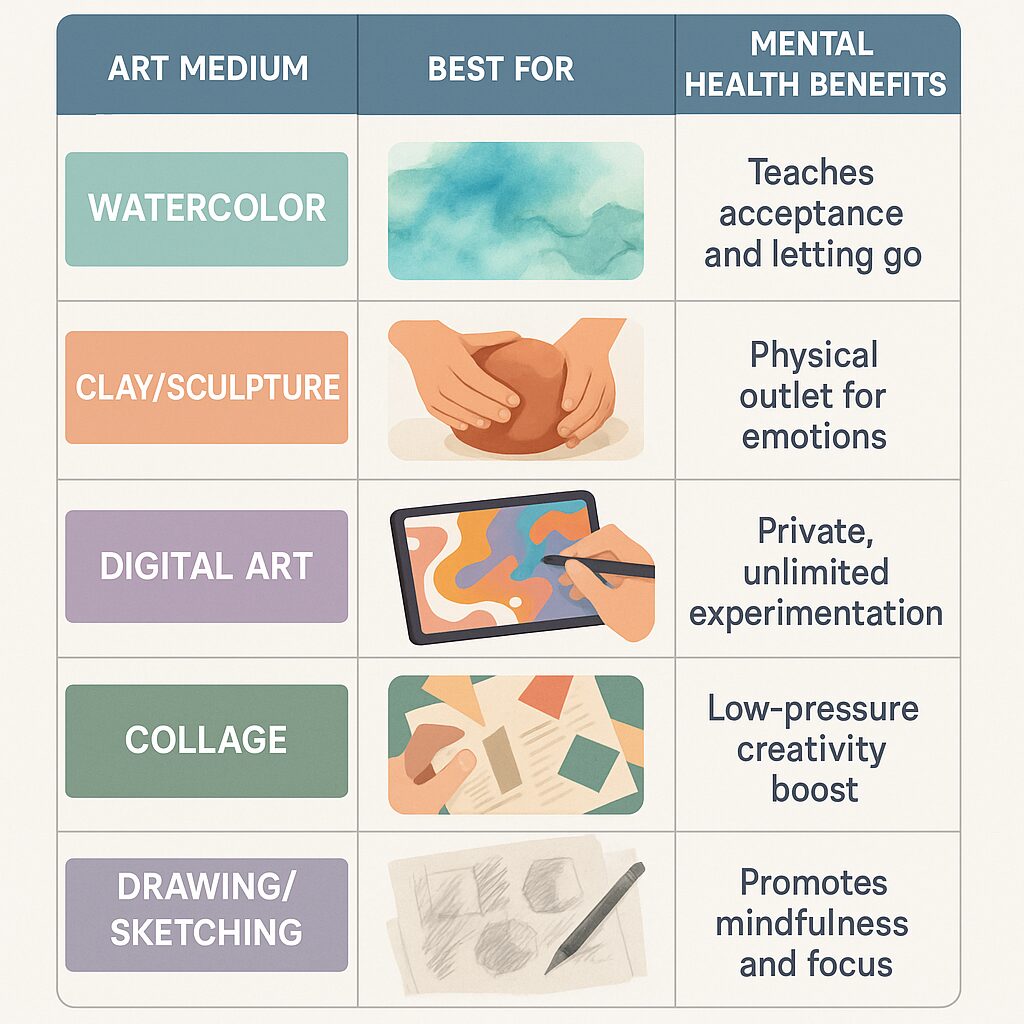
Building Resilience Through Creative Practice
Developing Emotional Coping Skills
Regular art-making acts like a gym workout for your emotional muscles. Each time you work through a creative challenge—whether it’s mixing the perfect color or solving a composition problem—you’re building crucial psychological skills that transfer to other areas of life.
These skills include:
- Self-efficacy: Confidence in your ability to handle difficulties
- Cognitive flexibility: Ability to adapt and find alternative solutions
- Distress tolerance: Capacity to remain calm during stressful situations
- Self-awareness: Better understanding of your thoughts and feelings
The Compound Effect of Consistent Practice
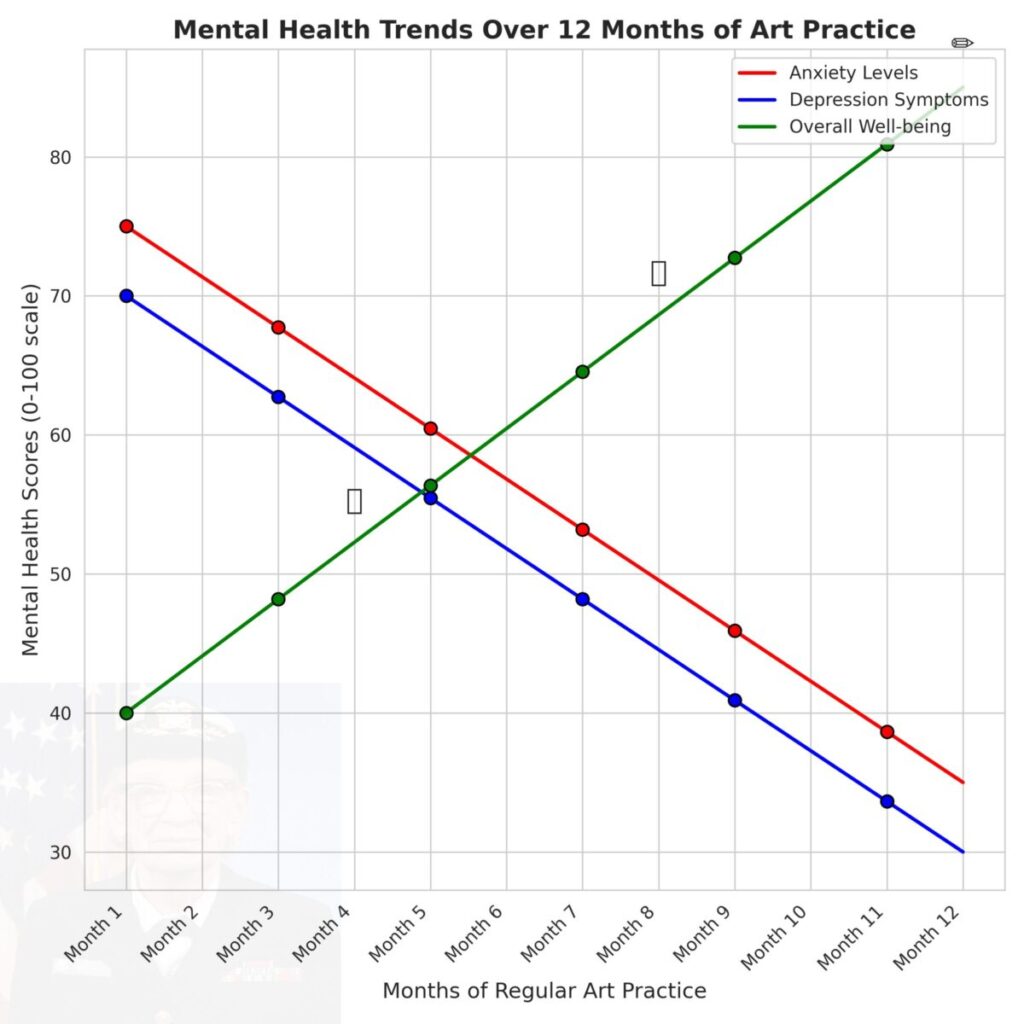
While a single art session can provide immediate stress relief, the most profound mental health benefits come from consistent, long-term practice. Research tracking individuals over extended periods shows that people who maintain regular creative practices experience:
- 23% reduction in symptoms of depression and anxiety
- Improved sleep quality and duration
- Enhanced immune system function
- Greater life satisfaction and sense of purpose
- Stronger social connections and support networks
Getting Started: Your Journey to Better Mental Health
Setting Up Your Creative Space
You don’t need an expensive studio or professional supplies to begin reaping the mental health benefits of art. Here’s what you actually need:
Essential Supplies for Beginners:
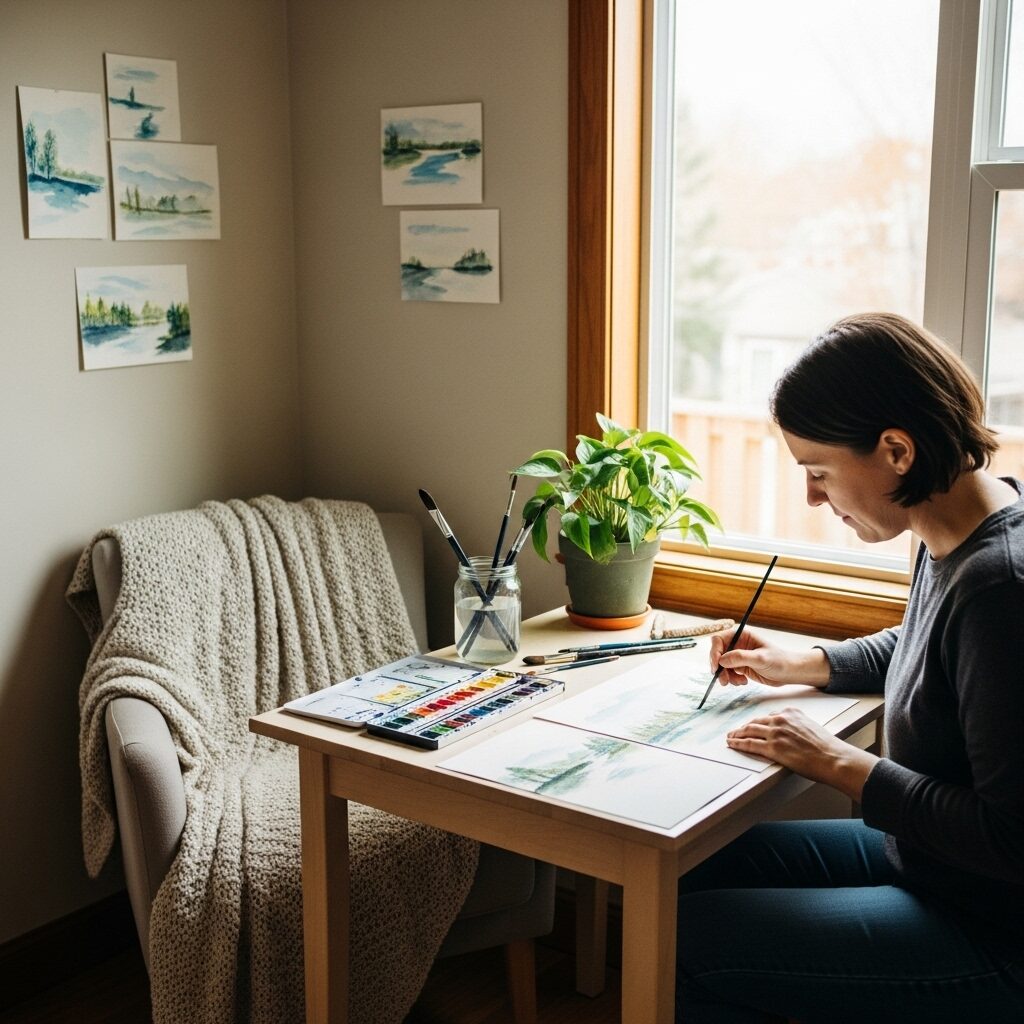
- Basic watercolor set or colored pencils
- Simple sketchbook or watercolor paper
- A few brushes or drawing tools
- Comfortable, well-lit space
- Most importantly: permission to create imperfectly
Choosing Your Artistic Path
The best art form for mental health is the one you’ll actually do consistently. Consider these factors when starting:
- Your personality: Are you detail-oriented or prefer broad strokes?
- Available time: Do you need quick 10-minute sessions or longer periods?
- Physical considerations: Any limitations with fine motor skills?
- Goals: Seeking relaxation, emotional expression, or skill-building?
The Difference Between Art Therapy and Therapeutic Art
Professional Art Therapy
Art therapy is a licensed mental health profession where trained therapists use art-making to help clients address psychological, emotional, and behavioral challenges. This formal treatment is recommended for:
- Serious mental health conditions
- Trauma recovery
- Addiction treatment
- Eating disorders
- Grief counseling
Self-Guided Therapeutic Art
What we’re discussing in this article is “therapeutic art”—the practice of using creative expression for personal well-being and stress management. This approach is:
- Accessible to everyone
- Focused on the creative process rather than artistic skill
- Beneficial for general mental wellness
- Complementary to professional mental health care
“The creation of something new is not accomplished by the intellect but by the play instinct acting from inner necessity. The creative mind plays with the objects it loves.”
Carl Jung
Art for Mental Health Across Different Life Stages
Children and Adolescents
Art provides young people with crucial tools for emotional development and self-expression. Creative activities help children:
- Develop emotional vocabulary
- Build confidence and self-esteem
- Process complex feelings about growing up
- Connect with peers through shared creative experiences
Adults and Stress Management
For adults juggling work, relationships, and responsibilities, art offers a powerful antidote to chronic stress. Regular creative practice can:
- Provide necessary mental breaks from daily pressures
- Improve work-life balance
- Enhance problem-solving abilities
- Create sense of personal accomplishment outside professional achievements
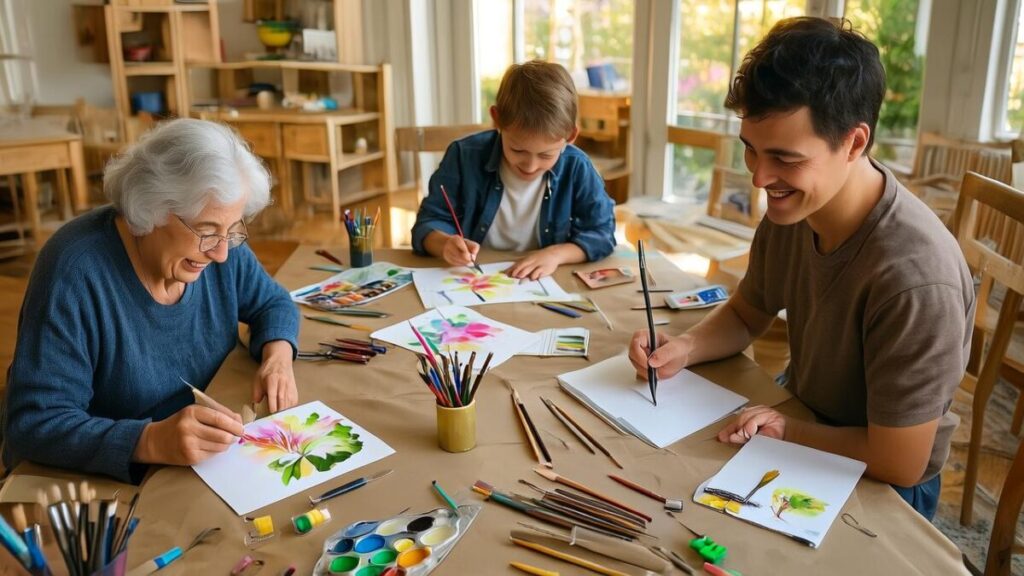
Seniors and Cognitive Health
Research suggests that artistic activities may help maintain cognitive function and emotional well-being in older adults. Benefits include:
- Slowed cognitive decline
- Reduced isolation and loneliness
- Maintained fine motor skills
- Sense of purpose and achievement
Creating Your Personal Art for Mental Health Practice
Daily Mindful Art Exercises
Start small with these simple practices:
5-Minute Gratitude Sketching: Each day, draw one thing you’re grateful for Color Breathing: Use watercolors to paint your breath—cool blues for inhaling, warm colors for exhaling Emotion Mapping: Create abstract representations of your current feelings Nature Journaling: Combine outdoor observation with simple sketches
Weekly Creative Challenges
Set aside longer periods for more involved projects:
- Abstract painting sessions focused on color and emotion
- Collage work using magazines and personal photos
- Clay modeling for stress relief and grounding
- Digital art creation for tech-savvy individuals
Overcoming Common Barriers
“I’m Not Artistic”
This is the most common barrier people face when considering art for mental health. Remember:
- Therapeutic art is about the process, not the product
- Everyone has creative capacity—it just needs nurturing
- “Bad” art can be just as therapeutic as “good” art
- Comparison is the enemy of creativity and healing
Time Constraints
Even busy schedules can accommodate mental health art:
- Keep a small sketchbook for waiting periods
- Use smartphone apps for digital doodling
- Try finger painting techniques that require minimal setup
- Combine art with other activities (listening to podcasts while drawing)
Perfectionism
If you struggle with perfectionist tendencies:
- Set a timer and stop when it goes off, regardless of “completion”
- Use your non-dominant hand occasionally
- Try watercolor techniques that embrace unpredictability
- Focus on color and emotion rather than realistic representation
The Long-Term Journey: Art as a Path to Flourishing
Regular engagement with art for mental health goes beyond simply feeling better in the moment. Longitudinal studies demonstrate that people who maintain consistent creative practices over years experience what psychologists call “flourishing”—a state of optimal human functioning characterized by:
- High levels of emotional well-being and life satisfaction
- Strong sense of personal growth and self-acceptance
- Meaningful relationships and social connections
- Clear sense of purpose and autonomy
- Resilience in facing life’s inevitable challenges
This transformation doesn’t happen overnight, but the research is clear: the simple act of creating art regularly can lead to profound and lasting improvements in mental health, emotional resilience, and overall quality of life.
Frequently Asked Questions
Q: How often should I create art for mental health benefits? A: Even 15-20 minutes 2-3 times per week can provide noticeable benefits. The key is consistency rather than duration.
Q: What if I don’t like what I create? A: In therapeutic art, the process matters more than the product. Focus on how creating makes you feel rather than the final result.
Q: Can digital art provide the same mental health benefits as traditional art? A: Yes! Digital art creation can be just as therapeutic, especially for those comfortable with technology.
Q: Is art therapy covered by insurance? A: Professional art therapy may be covered when provided by licensed therapists. Check with your insurance provider for specific coverage details.
Q: What’s the best art medium for beginners interested in mental health benefits? A: Watercolors and colored pencils are excellent starting points due to their forgiving nature and low cost.
Whether you’re dealing with everyday stress or seeking deeper emotional healing, art for mental health offers a natural, accessible path to greater well-being. The science is clear, the benefits are profound, and the only requirement is your willingness to begin creating.
Additional Resources
- American Art Therapy Association – Find certified art therapists and learn about professional treatment
- National Institute of Mental Health – Comprehensive mental health information and resources
- The Arts & Healing Network – Community and resources for arts-based healing
- Mindfulness-Based Art Therapy – Combining meditation and creative expression
- Psychology Today Art Therapy – Directory of art therapy professionals
Citations
- Stuckey, H. L., & Nobel, J. (2010). The connection between art, healing, and public health: A review of current literature. American Journal of Public Health, 100(2), 254-263.
- Kaimal, G., Ray, K., & Muniz, J. (2016). Reduction of cortisol levels and participants’ responses following art making. The Arts in Psychotherapy, 45, 35-43.
- Czamanski-Cohen, J., & Weihs, K. L. (2016). The bodymind model: A platform for studying the mechanisms of change induced by art therapy. The Arts in Psychotherapy, 51, 63-71.

